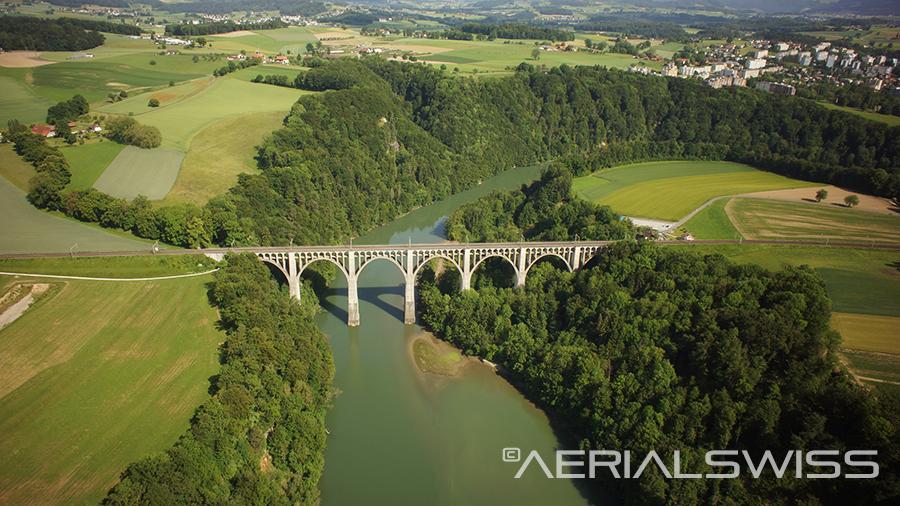Swiss cars are growing: SUVs size surge despite tight spaces

Keystone / Gaetan Bally
Cars in Switzerland are growing by one or two centimetres every year, according to an analysis by Swiss public television, RTS. With the exception of individuals living in Geneva, people in French-speaking Switzerland, however, are moving against this trend, opting instead for smaller cars than those in German-speaking Switzerland.
Longer, wider and higher. Driven by the SUV craze, vehicles around the world are getting larger. Switzerland is no exception. However, parking space size and roads remain unchanged.
A first ever study conducted by Swiss public television, RTS, its data analysis department measured changes in the size of passenger cars in Switzerland (see box for methodology).
The result: every year, new models put on the road are one or two centimetres longer. Cars in the country have grown by 16 centimetres since 2011.
More problematic is the width: new cars grow by around one centimetre every two years, or six centimetres since 2011. On average, cars are now 4.49 metres long and 1.84 metres wide.
What’s behind this growth-transformation? The answer is connected to the success of sports utility vehicles (SUVs), the number of which has exploded. By 2023, SUVs accounted for half of all models sold in Switzerland.
The emergence of electric cars is also boosting these figures. The average new car registered in 2023 was 4.52 metres long and 1.86 metres wide. That’s 18 centimetres longer and 5 centimetres wider than petrol engine automobiles.
Which region in Switzerland is buy bigger?
Although manufacturers are offering ever-larger models, at the end of the day it is the consumers who are forking over the cash. The analysis by RTS shows sales of these larger cars varies from region to region. It is particularly marked in German-speaking Switzerland, drawing a car “Röstigraben”, a
Named after the Swiss-German roasted potato patties, the “Röstigraben” (literally, rösti ditch) follows roughly the geographic delineation of the Sarine/Saane river near Fribourg, and refers to the difference between German speakers and French speakers. Read more about the “Röstigraben” in this article:
More

More
The ‘Rösti divide’, a barrier that binds the Swiss
Last year, the largest vehicles were bought by individuals registered in canton Zug, followed by canton Schwyz and canton Graubünden. In the regions, the record is set in the municipality Engadine in canton Graubünden, where the average length of the cars registered there is 4.60 metres and the width 1.87 metres.
Residents of French-speaking Switzerland and of canton Ticino, however, are opting for smaller vehicles. The six cantons with the smallest cars are all outside German-speaking regions of Switzerland. The only exception is Geneva, which is slightly above the Swiss average.
For example, new car registrations in 2023 in the Jura region are estimated to be 19 centimetres shorter and 5 centimetres narrower than those registered in canton Zug. Residents of the Locarno region in canton Ticino opt for the smallest models, averaging 4 metres and 32 centimetres long and 1 metre 81 centimetres wide.
Does size matter?
It should come as a surprise that canton Zug falls at the top of the “large car” list. It has the highest density of luxury cars, many of which are very large.
According to the RTS analysis, of all the new vehicles on the road in 2023, the largest models are Bentley’s and Lamborghini’s, car brands who are the top of luxury automobiles. These car models have a surface area close to 10 metres 2 centimetres, while on the other end of this spectrum, Fiat cars cover just 6.4 m2.
The Italian manufacturer, Fiat, is at the bottom of the large car range, particular due to its popular Fiat 500. Though the Fiat 500 has grown considerably since its launch in 1957, this icon car is still around 30 centimetres narrower than a Lamborghini.
Apart from in Zug, these luxury cars are not as common. However, Mercedes-Benz vehicles, the 5th most widely distributed manufacturer in Switzerland last year, vehicles are on average 22 cm wider and 97 cm longer than Fiat models.
The parking battle
The evolution of the vehicle fleet is not without consequences. Parking between two SUVs can be a real challenge. It’s often impossible to fit these large model cars in car parks around the country, particularly underground parking spaces, which can’t be expanded.
“We can’t move the support beams,” Johnny Perera, director of the Inovil car parks in Lausanne, told RTS. “The emergence of large vehicles is a real constraint for car parks that were built 50 or 60 years ago.
The only solution is to reduce the number of spaces. Where there are three spaces, we could put in two. But that would mean customers would have to pay 150% for a parking space, which they are not prepared to do,” continues Johnny Perera.
Taxing by size
Some major cities are taking steps to deal with the increase in SUVs. For example, Paris famously is due to introduce a higher parking charge for SUVs this coming autumn. In Switzerland, several similar projects are under consideration.
In canton Basel City, the cantonal authorities want to include size in the calculation of vehicle tax. “I think it’s fair to make people who buy cars that damage society pay more,” explains Raphael Fuhrer, the Green Party parliamentarian behind this proposal. “Air pollution and land use are external costs. They should be paid for by those who purchase and drive these cars.”
For the automobile lobby, size should not be a determining factor. Nicolas Leuba, president of the Vaud section of the Swiss Automobile Association, defends all vehicles, from the smallest to the largest.
“Individuals buy a vehicle according to need. You may need a small electric car to go into the city, a slightly bigger car for the weekend, an estate car for business people and an SUV for farmers. And that would be justified. There should be no penatly policies,” he insists.
A fleet the size of canton Basel City
In Parliament, several motions and postulates have been tabled in recent years against the widespread use of SUVs. In March, the latest of these, from Zurich Green Party Parliamentarian Marionna Schlatter, called on the Federal Council to “take measures to curb the trend towards ever larger, heavier and more powerful cars”.
In Schlatter’s view, in addition to excessive CO2 emissions, SUVs also represent “a greater danger to the occupants of smaller vehicles, pedestrians and cyclists”. The Federal Council, which has yet to respond, has rejected similar proposals in the past.
While it is becoming increasingly difficult to park or overtake larger cars, this has not discouraged Switzerland drivers from purchasing these vehicles. These model types continue to grow in size and number, also taking up increasingly more public space. Its total surface area of vehicles has jumped by 24% since 2011. Currently, the country’s 4.8 million passenger cars would cover just over 37 km2: an area the size of canton Basel City.



